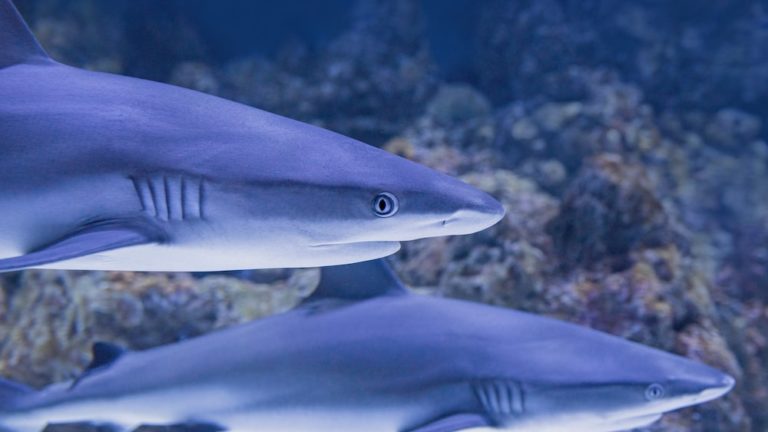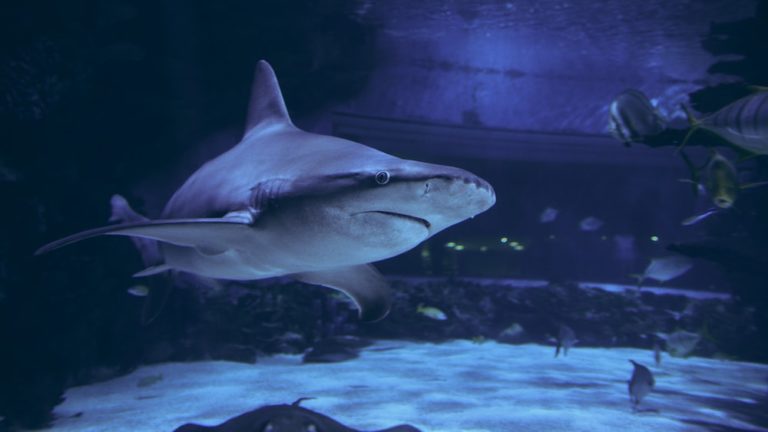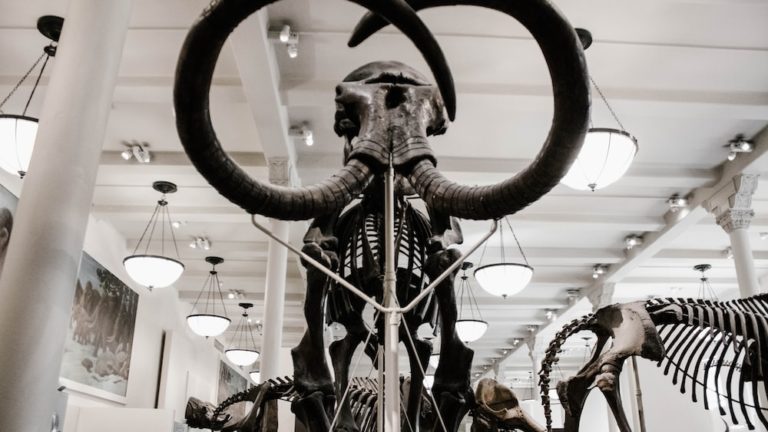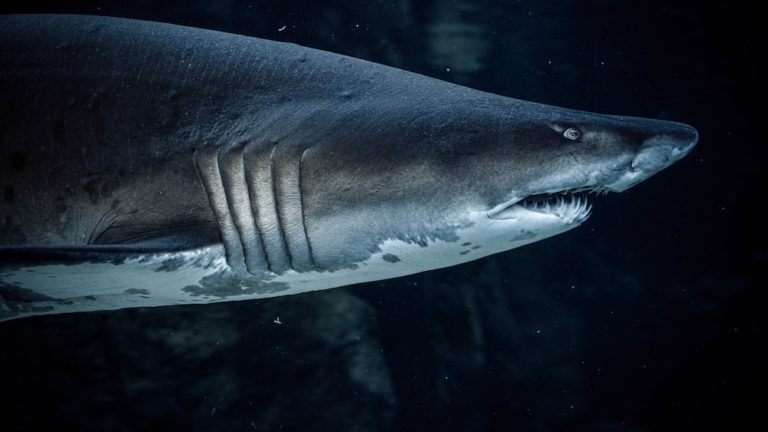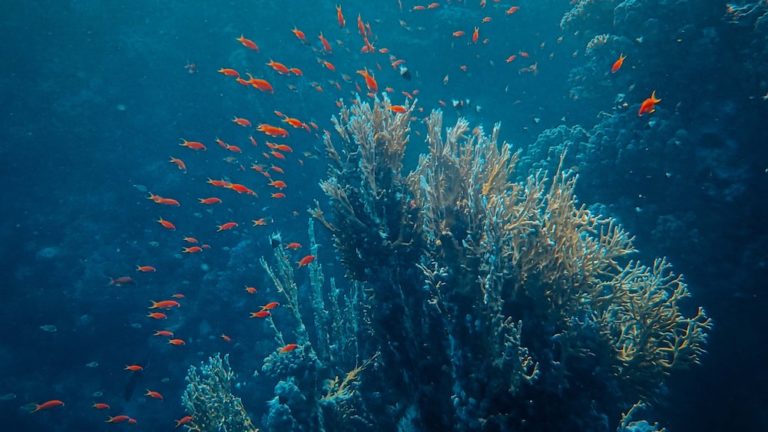How Long Do Sharks Sleep? Unveiling The Shark Sleep Secrets
How Long Do Sharks Sleep? Unveiling The Shark Sleep Secrets
Dive into the enigmatic world of the deep blue, where sharks reign supreme and mysteries abound. For all of you marine life enthusiasts and eco-adventurers out there, have you ever pondered how long do sharks sleep? It’s a curiosity that beckons us to explore the sleeping secrets of these fascinating marine predators.
Key Points:
- Sharks have unique sleep patterns adapted to their marine environment.
- Sleep in sharks is a time of lowered activity and alert restfulness, not unconsciousness as in land animals.
- Sharks have adapted breathing techniques to maintain oxygen supply during rest.
- Different shark species exhibit varied sleep behaviors, from resting on the ocean floor to yoyo swimming.
- Estimating the duration of shark sleep cycles is challenging due to their constant motion and environmental factors.
- Sharks may remain partially aware of their surroundings and keep some senses alert during rest.
Sharks have patrolled our oceans for millions of years, a testament to their evolutionary prowess. But beneath their tough exterior lies an intriguing aspect of their existence – their sleep habits. Their world is one of silence and shadows, where the need for rest collides with the instinct to survive. As conservationists, understanding the nuances of shark behavior is essential to their protection.
Today, we’ll unfurl the sail on this underwater odyssey, venturing through the aquatic realm to uncover the slumberous mysteries of sharks. From the silhouettes of sharks against the moonlit ocean surface to the gentle dance of their gills, we’ll weave a tale of science and nature that keeps our fins firmly planted in the world of fact.
Defining Sleep in the Animal Kingdom
The animal kingdom is a patchwork quilt of diverse sleeping patterns, each uniquely adapted to the lifestyle demands of every creature. In this aquatic tapestry, sleep is as varied as the species themselves, and decoding these patterns reveals much about the survival strategies employed by our finned friends.
What is Sleep?
Sleep is the universal pause button, a state of reduced consciousness and decreased responsiveness to the environment. It is as essential as the air we breathe or the water that cradles life beneath the waves. For many land-dwellers, sleep is a nightly surrender to dreams and darkness.
Marine creatures, however, redefine these terms, twisting and shaping the concept of sleep to fit their liquid domain. It’s a mesmerizing ballet of biological necessity, executed with the grace of a manta ray’s glide through the midnight sea.
Sleep is a universal pause button essential for all living beings, each adapting to it in their own unique way.
How Sleep Varies Among Different Species
Sleep is not a ‘one size fits all’ phenomenon – it’s custom-made to suit the ecological wardrobe of each creature. On land, sleep can range from the short catnaps of a giraffe to the lengthy hibernations of a bear.
- Horizontal slumbers are common among mammals, while birds often adopt a one-eye-open approach to rest.
- Contrastingly, in the marine sphere, fish employ a variety of repose routines. From drifting in the current to nestling in the safety of coral crevices, sleep takes on a myriad of forms, all tailored to the ebb and flow of ocean life.
The Unique Sleep Patterns of Sharks
Let’s submerge into the depths where sharks rule the watery kingdom, creatures whose sleep patterns have long baffled scientists and hobbyists alike. Shedding light on how long do sharks sleep unveils an intricate portrait of their daily lives beneath the waves.
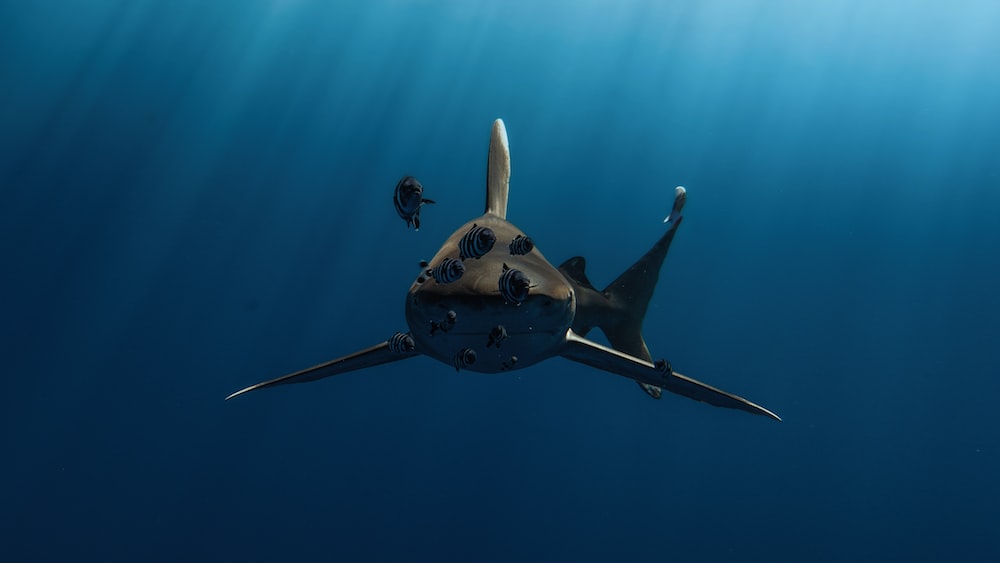
Do Sharks Actually Sleep?
The question of whether sharks sleep has often caused much scratching of heads and stroking of beards in scientific circles. With eyes seemingly always open and bodies perpetually in motion, do these apex predators ever hit the pauze button?
- Sleep in sharks is not the closing of eyes and drifting into unconsciousness as we know it. Instead, it’s a more subdued affair, a time of lowered activity and alert restfulness.
The Importance of Sleep for Sharks
You might think that in the cutthroat world of the ocean’s apex predators, sleep would be an afterthought. However, even these fearsome swimmers need their downtime. Sleep for sharks is not just about conserving energy; it’s a critical period for processing information and healing wounds, a respite for their bodies in their unending patrol of the sea.
- Resting also allows sharks to maintain their cognitive abilities, ensuring they remain sharp and efficient hunters.
- It’s a delicate balancing act, ensuring they stay vigilant to potential threats or opportunities, even when appearing to be at their most vulnerable.
Sleep in sharks might be akin to a computer in sleep mode – still running, still alert, but conserving energy until the next burst of activity beckons.
Resting and sleep are essential for sharks to process information, heal wounds, and maintain cognitive abilities, akin to a computer in sleep mode.
Investigating How Sharks Manage to Breathe While Resting
The conundrum of shark sleep deepens when we consider the need for a constant flow of water over their gills to extract life-giving oxygen. So, how do these creatures manage to breathe while taking a break from their ceaseless patrol?
The Role of Buoyancy and Water Flow
Understanding how sharks sleep involves delving into the mechanics of their breathing. Sharks, by design, are denser than water, relying on dynamic movement or specialized anatomy to maintain buoyancy and thus, a smooth flow of water across their gills.
- First, let’s explore the mega-wonders of buoyancy. Sharks are equipped with oily livers and fins strategically shaped to lift their massive bodies as they glide through the water.
- Couple this with the ocean’s currents which act as a natural ventilator, constantly washing over their gills, enabling a steady supply of oxygen even during periods of rest.
Ram Ventilation vs. Buccal Pumping
The shark world features two dominant breathing techniques: ram ventilation and buccal pumping – each an ingenious solution to the continuous need for oxygen.
- In ram ventilation, sharks swim with their mouths agape, allowing water to pass over their gills as they move – think of it as their version of autopilot.
- Buccal pumping is more labor-intensive, with sharks actively pumping water over their gills through the movement of their cheeks – a shark workout to stay oxygenated.
Each method is a testament to the adaptive genius of sharks, demonstrating their unyielding mastery over their aquatic domain.
Sharks use two main breathing techniques: ram ventilation, where they swim with their mouths open to passively take in water, and buccal pumping, where they actively pump water over their gills using their cheeks.
Variations in Shark Sleep Behavior
Sharks are the ocean’s individuals, each species flaunting its own set of sleeping habits as varied as the patterns on a school of fish. Here, we dive into the whirlpool of differences that dictate how long do sharks sleep across the spectrum of shark species.
Species-Specific Sleep Patterns
The sleep patterns of sharks are as diverse as their habitats. Some species like the nurse shark are known to rest idly on the ocean floor, while others, like the great white, must remain in perpetual motion.
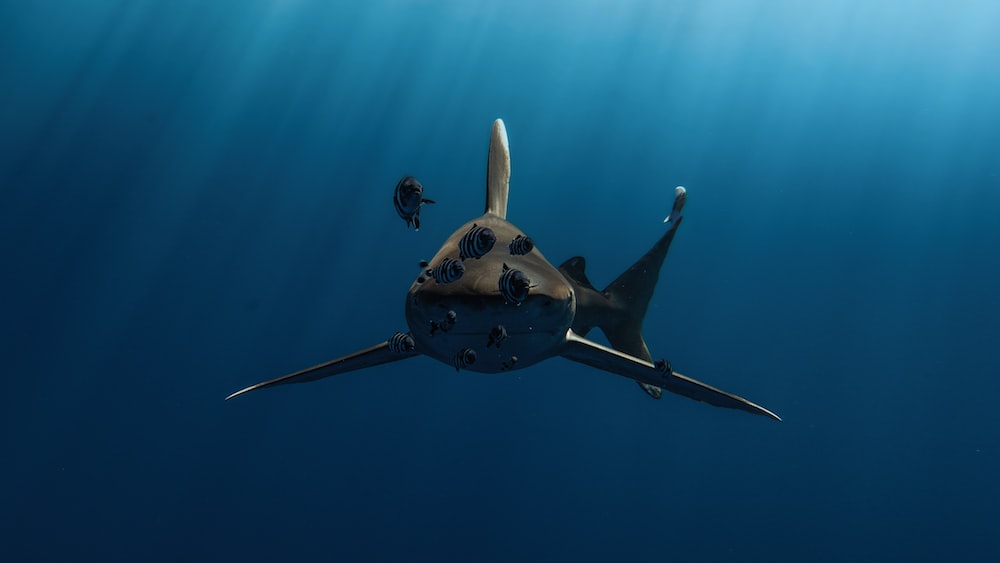
- These behaviors reflect adaptations to environment, prey, and survival strategies.
- To understand how long do sharks sleep, one must consider these species-specific tendencies, as well as the distinctive characteristics that dictate their sleep requirements.
Resting on the Ocean Floor vs. Yoyo Swimming
For many benthic (bottom-dwelling) sharks, finding a cozy spot on the seabed to take a load off is the sleep strategy of choice. Resting here can mean anything from a few minutes to several hours, depending on the shark’s daily routine.
- Conversely, yoyo swimming is a fascinating behavior observed in pelagic (open water) sharks – a rhythmic rise and fall in the water column that allows these travelers to snatch moments of rest while still moving.
- This dance of buoyancy and gravity serves to keep the water and, consequently, the oxygen flowing over their gills even when they’re in a sleep-like state.
The Duration of Shark Sleep Cycles
Understanding how long do sharks sleep plunges us into the ocean’s depths, into a world where the ticking of the human clock doesn’t resonate. Sleep cycles in these majestic creatures are still somewhat of a wet mystery. Some shark species snooze in short spurts throughout the day and night, while others might engage in periods of rest that are more akin to resting than true sleep as we understand it. One thing is for certain: the shark sleep cycles are as unique as the fins that slice through the sea.
Estimating Sleep Length in Sharks
Estimating the snooze time for sharks can be like trying to count the fish in the sea – challenging but not impossible. Researchers hypothesize that some sharks may only rest in intervals during which their brain activity diminishes. This rest could last from mere minutes to perhaps longer spans. Absent the eyelids for shut-eye clues, scientists rely on changes in swimming patterns and muscle relaxation to speculate sleep duration.
Unlike their terrestrial counterparts, sharks don’t have the luxury of curling up in a cozy bed. They must always be on the move, hence their dozing durations – if they occur – must fit this constant motion. Observations of sharks lying motionless or engaging in slow, rhythmic swimming might suggest a form of quiescence, akin to a state of reduced consciousness.
Understanding how sharks rest and sleep can be complex, but researchers speculate that they may rest in intervals with reduced brain activity, guided by changes in swimming patterns and muscle relaxation.
Factors Influencing Sleep Duration
The slumber time-frame for these sea predators is influenced by a tidal wave of factors:
- Oxygen availability – some need to keep moving to gulp life-giving oxygen through their gills,
- Temperature – colder waters may require less metabolic energy, allowing for more rest,
- Hunger levels – a well-fed shark might be more inclined to hit the pauses on its patrol.
Moreover, shark sleep could also be shaped by environmental changes. Like the moon tugs at the ocean’s blanket, factors like light levels and tides might tug at the sharks’ eyelids, metaphorically speaking, since not all sharks have eyelids. For instance, sharks in captivity show varied sleeping habits when their surroundings mimic day-night cycles.
Unusual Sleeping Habits of Sharks
Dive with me into the extraordinary world of shark slumber, and you’ll discover that their sleeping habits raise more questions than a lost diver with a faulty compass. These submarines of the sea have adapted unique rest rituals that may not even closely resemble the sleep patterns of terrestrial snoozers or even their underwater brethren.
Sleep and Shark Senses
Imagine trying to catch forty winks while still keeping a sharp eye on your surroundings – this could be the reality for sharks. Their senses, fine-tuned to detect the most subtle of movements, might remain somewhat alert during their downtime. Several shark species, for the safety of survival, cannot afford to completely surrender to the arms of Morpheus. They keep a part of their senses on high alert, possibly detecting nearby predators or prey despite being in a state of rest.
This semi-vigilant doze might be less about dreaming of chasing down juicy seals, and more about staying off someone else’s dinner menu. It ensures that, even while resting, a shark is never fully disengaged from the ebb and flow of underwater life.
Sharks’ Adaptations for Survival During Rest
Sharks have refined the art of rest without risking becoming a resting place for other creatures. These remarkable adaptations for survival during rest include:
- The ram ventilation used by species like the Great White, allowing for continued respiration whilst not actively swimming,
- Yoyo swimming employed by others, enabling periodic rest as they glide in a seemingly lazy way up and down the water column,
- Not to forget, the buccal pumping that some resort to, drawing water over their gills manually as they lie on the seabed.
These behaviors exemplify the sharks’ ability to balance the need for rest with the inherent dangers of their environment. Through millions of years of evolution’s trial and error, these pinnacle predators have mastered the art of catching Z’s while staying a fin’s length away from peril.
FAQs
1. How do scientists determine if a shark is sleeping?
Scientists determine if a shark is sleeping by studying changes in their swimming patterns, such as slowing down or lying motionless. They also monitor for signs of decreased brain activity and relaxed muscle tone as indicators of rest or sleep states.
2. Can sharks sleep with their eyes open?
Yes, sharks can sleep with their eyes open because many species lack eyelids. Instead of closing their eyes, their reduced brain activity indicates they are in a state of rest.
3. Are there any shark species that sleep more than others?
There are shark species that demonstrate more prolonged rest periods or behaviors associated with sleep, but definitive claims about which species sleep more are challenging due to the nuances of defining sleep among varied shark species.
4. How does the sleep of sharks compare to that of other marine animals?
The sleep of sharks differs remarkably from that of other marine animals; mammals such as dolphins have unihemispheric sleep, while sharks may not sleep in the same way but display unique adaptations for resting while remaining partially aware of their surroundings.
Conclusion
Our journey into the shark sleep enigma has, I hope, shed light on the fascinating, rather fishy night lives of these impressive marine beings. Yet, it seems the question of how long do sharks sleep might as well be like the fathomless ocean – deep and full of continuing mysteries.
In the gentle glow of the moonlight over the reef, one might wonder if sharks are silently counting sheepfish to drift into slumber. Do our finned friends dream of vast schools of fish, or are their minds as calm as the ocean’s abyss? Perhaps we’ll never fully grasp the intricacies of their restful states, but isn’t the allure of the unknown what keeps us diving back into the depths for more?
As we surface from this underwater odyssey, let’s carry with us not only newfound curiosities but also a renewed responsibility to safeguard these sleepers of the sea. Each ripple we make on land echoes in their watery world. May your next dip into the ocean’s embrace be filled with respect and awe for its quiet guardians.
Wishing you fair seas and curious finds, Jasper Flynn



